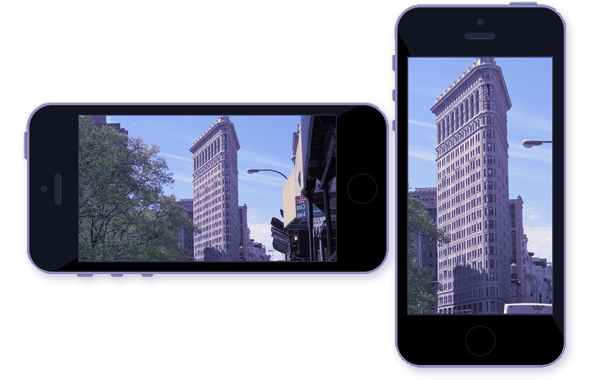Critical Reflection for my groups Short Film
CRITICAL REFLECTION
Critical Reflection Link - Google Doc
How do your products represent social groups or issues?
Together, my group and I made a short film about a young girl who gets stalked and abducted. It is meant to be a reflection on the larger social issue of gender-based violence and the widespread anxiety it causes in women. In the video we emphasize the vulnerability that many women encounter on a daily basis, especially while partaking in seemingly harmless hobbies like running, through the protagonist's terrifying experience. In our film, the male stalker, portrayed by me, stands in for the stereotypical predatory male, highlighting the risks associated with toxic masculinity and the objectification of women. Through a realistic and sympathetic portrayal of the protagonist's suffering, the film seeks to provoke thought and increase awareness of the pressing need for societal reform to address these challenges. The film's website and postcard offer further channels for interaction by informing viewers about the film's screening schedule and urging them to participate in the discussion around its topics. The primary objective during the development, scripting, filming, and editing of this movie was to produce a thriller that would capture audiences' interest. Our goal of evoking genuine dread and discomfort while simultaneously drawing attention to the systemic problems of male abuse of women is dissected and critically described on the website. The short film asks viewers to consider their own ideas on gender-based violence and to sympathize with the teenage girl's experiences through its depiction of her predicament. The video aims to challenge deeply rooted cultural prejudices and foster empathy and understanding on such a sensitive and cruel issue by elevating the voices of people touched by such violence. As an actor and director, my ultimate goal is to use narrative as a vehicle for social commentary and activism, bringing attention to significant problems and inspiring constructive social change. Even as terrifying as this film is, the shining image of wanting and fighting for the female protagonist's well-being bleeds through the screen and is burned into the minds of the audience.
How do the elements of your production work together to create a sense of ‘branding’?
Our production's components work together in harmony to create a unified brand identity that captures the spirit of our short film. An important factor in creating our brand identity is visual aesthetics. Throughout the whole movie, we use a gloomy color scheme to represent the foreboding overtones and approaching threat that our protagonist must face. Viewers are drawn more into the story by the contrast between light and shade, which heightens the tension and uneasiness. Furthermore, the audience is more fully immersed in the narrative because of our deliberate use of camera angles and motions. The way that handheld camerawork is contrasted with static images in dangerous situations highlights the protagonist's transition from everyday life to vulnerability and loneliness.Sound design supports our branding efforts even more, especially the unique, tense soundtrack. The symbolic music and ambient soundscapes heighten the suspense and expectation, prompting genuine emotions from the audience. Particularly during dramatic and suspenseful scenes, thriller music draws attention to these moments and heightens the entire viewing experience. Our marketing assets, including the website and postcard, work in unison with the movie itself to develop our brand identity. A sense of mystery and intrigue is evoked by the dark color scheme and menacing images of the postcard, which mimic the style of the movie. The title "In the Shadows" is immediately associated with the thriller genre and foreshadows the brutality that lies beneath the surface of the seemingly normal park setting, thanks to the choice of a strong, bleeding red font.
How do your products engage with the audience?
In order to grab audiences' attention and evoke intense emotions, the short film my group and I made uses a clever mix of visual storytelling, narrative suspense, and targeted marketing. From the beginning, the spectator is taken into the teenage girl's seemingly regular daily routine, generating a sense of familiarity and connection. The opening shot's goal was to make the audience feel as if they were getting ready with our actor and to truly dive into her life. But as the story progresses, the presence of the male stalker creates a tangible sensation of anxiety and dread. The short film uses tense images and thriller music to successfully portray the protagonist's increasing sense of vulnerability and terror while also increasing the audience's emotional commitment in the narrative. The eerie soundtrack establishes the mood for the building dread, while clever camera work and editing enhance the suspense to keep spectators on the edge of their seats. The viewer feels a spectrum of emotions as the protagonist's situation gets worse, from dread and anxiety to fury and empathy. When the antagonist races off with an unconscious girl in his trunk, the sudden and unexpected ending of the film creates a lasting impression and forces spectators to confront the disturbing reality of gender-based violence. Apart from the movie, the website and postcard that go with it are crucial resources for drawing viewers in and captivating their interest in the project. The website gives important details about the movie's showing times and gives viewers an opportunity to delve further into the themes it addresses and learn more about the actors and their objectives. Meanwhile, the postcard invites people to attend the screening by acting as a physical reminder of the approaching event. Ultimately, I want to provide engaging and thought-provoking experiences that appeal to viewers' emotions as well as their brains. My goal is to create a memorable and engaging visual experience for viewers while igniting a conversation and motivating action on significant social issues through smart narrative and engagement activities.
How did your research inform your products and the way they use or challenge conventions?
Extensive research was essential to the development of my thriller short film, since it influenced many aspects of the production from visual aesthetics to narrative structure. Our creative choices were guided by this study, which also offered a foundation for questioning the genre's accepted conventions. Creating realistic character dynamics and motives required a close examination of actual occurrences of stalking and kidnapping. We sought to give our protagonist relatable feelings of dread, anxiety, and desperation by exploring the psychological effects of such horrific situations. This allowed us to follow conventional standards while delivering a genuine picture. By establishing the abductor's perspective, we were able to create a frightening and convincing antagonist, which increased the suspense and tension in the story. Strategic use of lighting and sound design, inspired by well-established thriller traditions, increased atmospheric tension. Studying the ways that restricted spaces have been used in movies to build suspense influenced how we portrayed important sequences, such as the main character confined in a car trunk. The cramped environment heightened the viewer's sensation of danger and powerlessness, adding to the short film's overall tension. Furthermore, research on modern problems like social media stalking enhanced the plot, challenging conventional views of stalking and giving the drama a vital new angle. Our goal was to make a message that is relevant to society and appeals to contemporary viewers by including features such as online stalking on the app Instagram. In the end, we were able to produce a compelling and socially conscious thriller that both follows and contradicts established thriller genre norms thanks to our research-informed approach. We wanted to emotionally connect with viewers and make a lasting impression, so we pushed the boundaries of the genre while remaining faithful to its core.



Comments
Post a Comment